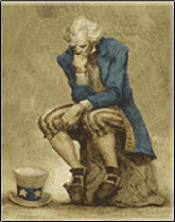
May 4, 2022
The early twentieth-century act known as “passing” referred to light-skinned black Americans pretending to be white “in order to avoid discrimination and gain access to the privilege of whiteness.” It’s an archaic term that is no longer in use, but that doesn’t mean that it no longer occurs. It just doesn’t occur in the manner that it did when the term was in common use.
‘); googletag.cmd.push(function () { googletag.display(‘div-gpt-ad-1609268089992-0’); }); }
“Passing” has a unique historical significance in this country that I first came to know while in college and studying Nella Larsen’s simply titled novel, Passing (1929). Larsen was a black author in the Harlem Renaissance that took place in  the 1910s to the mid-1930s. Other well-known authors, such as W.E.B Dubois and Langston Hughes, were also key players in this artistic movement that tended to focus on pride for black Americans’ ample contributions to society, especially in “cultural areas of life.”
the 1910s to the mid-1930s. Other well-known authors, such as W.E.B Dubois and Langston Hughes, were also key players in this artistic movement that tended to focus on pride for black Americans’ ample contributions to society, especially in “cultural areas of life.”
The idea of “passing” was generally viewed as a problematic for this group of artists who expressed immense pride in black culture, because “passers” were seen as Judases who publicly renounced their own race in order to uniquely take advantage of a system of racial prejudice against blacks.
Worthy of note is that “passing” in America was a one-way phenomenon, in which a member of a societally oppressed group posed as a member of another group that is less societally oppressed. Black Americans would often try to “pass” as white in order to gain privileges in a society which discriminated against blacks due to skin color. White Americans of darker skin tone did not typically seek to “pass” as black in order to suffer discrimination.
‘); googletag.cmd.push(function () { googletag.display(‘div-gpt-ad-1609270365559-0’); }); }
We don’t typically call pretending to be of another race in order to gain societal privileges “passing” anymore, but it certainly happens, and it’s similarly a one-way street. What’s different is the system of societal discrimination that is being navigated by the “passers.”
Take Satchuel Cole, an Indianapolis “racial justice” hustler, who was exposed in the late summer of 2020 for having posed as a black woman. “Friends, I need to take accountability for my actions and the harm that I have done,” she writes. “I have taken up space as a Black woman while knowing I am white.”
She’s not alone. Another left-wing race hustler on Twitter, Shaun King, a.k.a. Talcum X, has for years pretended to be a black man, and still maintains that he is black, despite the New York Times reporting in 2015 that both of the parents listed on his birth certificate are white.
It’s not limited to only the race hustling crowd, though. Academics seem to find a lot of value in “passing,” but similarly, it’s never to pass as white. University of Wisconsin grad student CV Vitolo-Haddad resigned from her teaching position, finally admitting that she is of Italian descent after years of claiming to be black. George Washington University history professor Jessica Krug is a “white Jewish” woman who presented herself as black for years, only to later apologize and admit the lie.
But who could mention this modern phenomenon without mentioning Rachel Dolezal? In 2015, after serving as the president of the Spokane chapter of the NAACP, she finally publicly admitted that she’s white. “I acknowledge that I was biologically born to white parents, but I identify as black,” she said.
Note that language — “I identify as black.” Ms. Dolezal serves as a great segue to the next point, which is that not only does “passing” still exist in the twenty-first century, it’s evolved beyond race, and the logic behind it has become muddled.
‘); googletag.cmd.push(function () { googletag.display(‘div-gpt-ad-1609268078422-0’); }); } if (publir_show_ads) { document.write(“
Dolezal is not, in reality, black. We all know that. She made a conscious choice to pretend to be a black person, and she didn’t do it because she thought she would suffer societal discrimination for having done so. She did it for the societal advantages that being black in America would afford her.
But her choice of words is worth considering. If she identifies as black, is she actually black? Because I’m constantly reminded by those who presume to speak for the cultural status quo that a man who chooses to identify as a woman is actually a woman.
And isn’t being a woman also tantamount to being a victim in our systemically racist, patriarchal society? And if that is so, then why is Will Thomas pretending to be Lia Thomas? So that he can abandon the “privilege” that he enjoys a white man in order to willingly accept persecution as a female?
For that matter, if transgender Americans are so horribly discriminated against in society, why are so many publicly signing up to be persecuted by our society in that way?
None of this, of course, is difficult to understand. Human beings act according to incentives. And if being black in twenty-first century America actually made one the victim of societal discrimination, wouldn’t “passing” in the twenty-first century still look a lot like “passing” in the early twentieth when that was certainly the case? Why are there so many white people pretending to be black and so few black people pretending to be white if there were truly societal incentives offered by “white privilege?”
You know the answer to those questions. Being societally perceived as a victim of societal discrimination affords societal privilege in today’s world. And the only person left who’s not a victim of societal discrimination of any kind is the heterosexual white man.
Yet no one is attempting to “pass” as an ordinary heterosexual white man these days, you’ll notice. And that’s all you need to know to recognize that the victimhood narratives are nothing but lies.
If you experience technical problems, please write to [email protected]
FOLLOW US ON





